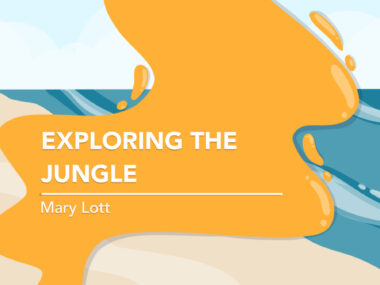I treat cold agglutinin disease as an opportunity to learn
There's much I don't know about the world, including the intricacies of CAD
Written by |

I looked about in wonder. The prairie — the vast, great American prairie, which reputedly had vistas so wide that the horizon was far off in the distance — filled my vision. But the vistas I saw were not wide, and the horizon was not far off. This place had hills — lots of undulating hills.
I find it difficult to imagine how places look if I haven’t seen them in person. I know I’ll see differences from my own native land, but exactly how different or how similar, I don’t quite comprehend until I experience it. There’s so much about this world, and not just with geography, that I’m still learning.
CAD is a new experience
One discipline that I’m studying is medicine focused on cold agglutinin disease (CAD). To be clear, I’m not a formal student enrolled at a university. My study is self-guided, and it began in 2018, when I was diagnosed. That was an “aha!” moment.
Like the prairie, which I’d known about without seeing it, I knew the characteristics and symptoms of what I was experiencing. But I had to “stand on the prairie” to understand what I’d read. It took a medical team for me to understand what I was going through.
I still don’t know much about the vast, great American prairie. I’m still learning about CAD.
Another step along my learning experience was listening to a Q&A session with hematologist-oncologist Jeremy Lorber, which was presented by the Cold Agglutinin Disease Foundation. Some of his responses confirmed issues I’d already experienced. Then again, some of his answers didn’t quite fit what I’d associated with my CAD journey.
Lorber said that CAD — like the undulating prairie — is a “fluctuating” disease. It gets worse, and it gets better. When asked about what makes it worse, he said, “There are certain things that we know can cause an exacerbation, and there’s also randomness … without a clear reason. Anything that’s … a complement-amplifying event can exacerbate CAD.”
Most frequently, those amplifying events are infections. A good example of these are the colds I get. The lingering fatigue I experience with a cold can last as long as six weeks.
Lorber mentioned surgery as another amplifying event, because of the inflammation associated with it. I’m tucking that piece of knowledge away for the future. No surgery is on my horizon now, but it’s good to know just in case.
Things I still need to learn
When I visited a segment of the prairie in Kansas this summer, I saw some things that didn’t fit my preconceived ideas. It was confusing to me. I’ve already mentioned the undulations, the hills and valleys, of it. Additionally, I saw more creeks than I’d realized. I saw a cottonwood tree for the first time. I need to study geography and botany more.
During some parts of Lorber’s presentation, I was confused. The first question he addressed concerned a link between CAD and allergies. If my eyes start watering and my nose flowing, I know I’ll become fatigued for weeks. But Lorber said, “They’re really different, and they shouldn’t really interact that much except in cases of severe allergies.” I’d thought there was a correlation.
Other things are confusing to me as well. I know that inflammation triggers the complement system. But my torn meniscus has nothing to do with CAD. My body’s fatigue seems out of proportion to me.
Additionally, I’ve been told that those with anemia shouldn’t exercise too much. In the first place, I have trouble walking 200 feet. How can I do any meaningful exercise? But Lorber encourages it.
The Scottish-Canadian poet Robert W. Service, once stated, “It’s the steady, quiet, plodding ones who win in the lifelong race.” That’s me ever since CAD developed within my blood. I plod along over the undulating prairie of my life, learning all the time, including about CAD.
Note: Cold Agglutinin Disease News is strictly a news and information website about the disease. It does not provide medical advice, diagnosis, or treatment. This content is not intended to be a substitute for professional medical advice, diagnosis, or treatment. Always seek the advice of your physician or other qualified health provider with any questions you may have regarding a medical condition. Never disregard professional medical advice or delay in seeking it because of something you have read on this website. The opinions expressed in this column are not those of Cold Agglutinin Disease News or its parent company, Bionews, and are intended to spark discussion about issues pertaining to cold agglutinin disease.






Leave a comment
Fill in the required fields to post. Your email address will not be published.